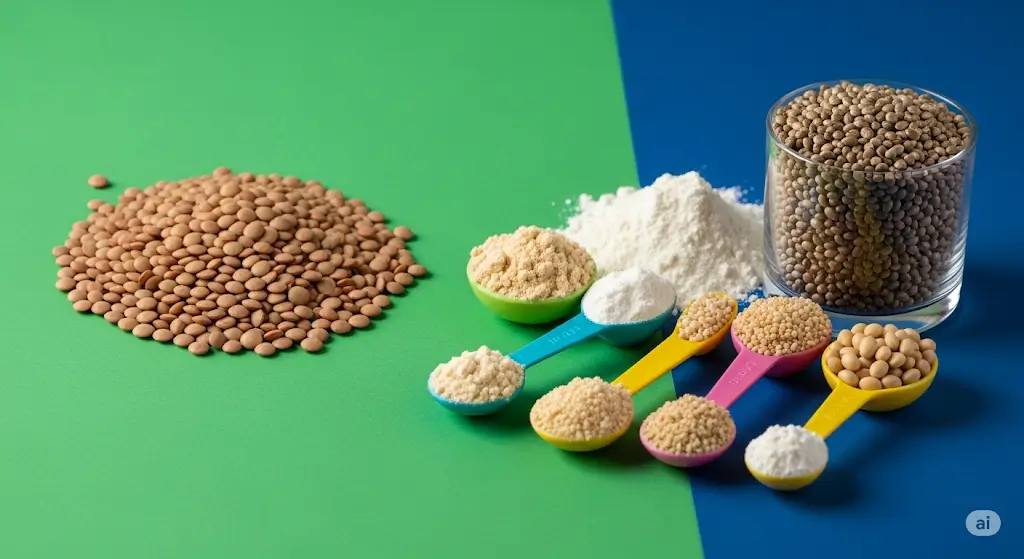I’ve been diving into the protein ingredients market, and it’s fascinating to see its robust growth trajectory. As of 2024, the global market is valued at approximately $54.5 billion, with projections estimating it will reach $85.6 billion by 2030, growing at a compound annual growth rate (CAGR) of around 7.8%. This surge is driven by rising consumer demand for high-protein diets, fueled by health-conscious lifestyles, fitness trends, and the growing popularity of plant-based nutrition. The increasing prevalence of dietary restrictions, such as lactose intolerance and veganism, has also pushed manufacturers to innovate with alternative protein sources. Additionally, the expansion of the food and beverage industry, particularly in emerging economies, is amplifying the need for protein ingredients in processed foods, supplements, and functional products. Economic factors like rising disposable incomes and urbanization further contribute to this market’s upward momentum, as consumers prioritize premium, protein-rich products.
Exploring the market’s segments, I find the diversity of protein sources particularly compelling. The key segments include animal-based proteins (such as whey, casein, and egg proteins), plant-based proteins (like soy, pea, and rice proteins), and microbial proteins. Among these, plant-based proteins hold the largest share, accounting for over 40% of the market in 2024, driven by the global shift toward sustainable and vegan-friendly diets. Soy protein dominates within this segment due to its versatility and cost-effectiveness, but pea protein is rapidly gaining traction for its allergen-free profile and high nutritional value. Animal-based proteins, particularly whey, remain strong in sports nutrition, while microbial proteins are emerging as a niche but innovative segment, especially in alternative protein applications.
When I look at the competitive landscape, the market is bustling with activity from both established giants and innovative newcomers. Leading companies include Archer Daniels Midland Company (ADM), Cargill, DuPont, and Kerry Group, which collectively hold significant market shares due to their extensive product portfolios and global distribution networks. ADM and Cargill stand out for their dominance in both animal and plant-based proteins, leveraging advanced processing technologies and sustainable sourcing. Smaller players like Ingredion and Roquette are also making waves, particularly in the plant-based space, by focusing on clean-label and non-GMO offerings. These companies are investing heavily in R&D to meet evolving consumer preferences, such as clean-label and allergen-free products, while strategic partnerships and acquisitions are helping them expand their market presence.
Geographically, I’ve noticed that North America leads the protein ingredients market, driven by high consumer awareness and strong demand for functional foods and supplements in the United States and Canada. Europe follows closely, with countries like Germany and the UK emphasizing sustainable and plant-based diets. The Asia-Pacific region, however, is the fastest-growing, with countries like China and India witnessing booming demand due to rising incomes, urbanization, and a growing fitness culture. Japan and South Korea are also key players, particularly in innovative protein applications. Latin America and the Middle East are emerging markets, where increasing health awareness and retail expansion are driving growth, though they lag behind in terms of market share.
Looking at the latest innovations, I’m excited by the advancements shaping the market. One standout is the development of precision fermentation for microbial proteins, which offers sustainable and scalable alternatives to traditional sources. Top trends include the rise of clean-label proteins, with consumers demanding transparency and minimal processing. Blended proteins, combining plant and animal sources for enhanced nutrition, are also gaining popularity. Additionally, the use of AI and biotechnology to optimize protein extraction and improve functionality is transforming the industry. Sustainability remains a core focus, with companies exploring upcycled ingredients and eco-friendly packaging to align with consumer values. These trends are setting the stage for a dynamic future in the protein ingredients market.












